Yuwei Guo
Multi-identity Human Image Animation with Structural Video Diffusion
Apr 05, 2025Abstract:Generating human videos from a single image while ensuring high visual quality and precise control is a challenging task, especially in complex scenarios involving multiple individuals and interactions with objects. Existing methods, while effective for single-human cases, often fail to handle the intricacies of multi-identity interactions because they struggle to associate the correct pairs of human appearance and pose condition and model the distribution of 3D-aware dynamics. To address these limitations, we present Structural Video Diffusion, a novel framework designed for generating realistic multi-human videos. Our approach introduces two core innovations: identity-specific embeddings to maintain consistent appearances across individuals and a structural learning mechanism that incorporates depth and surface-normal cues to model human-object interactions. Additionally, we expand existing human video dataset with 25K new videos featuring diverse multi-human and object interaction scenarios, providing a robust foundation for training. Experimental results demonstrate that Structural Video Diffusion achieves superior performance in generating lifelike, coherent videos for multiple subjects with dynamic and rich interactions, advancing the state of human-centric video generation.
Long Context Tuning for Video Generation
Mar 13, 2025Abstract:Recent advances in video generation can produce realistic, minute-long single-shot videos with scalable diffusion transformers. However, real-world narrative videos require multi-shot scenes with visual and dynamic consistency across shots. In this work, we introduce Long Context Tuning (LCT), a training paradigm that expands the context window of pre-trained single-shot video diffusion models to learn scene-level consistency directly from data. Our method expands full attention mechanisms from individual shots to encompass all shots within a scene, incorporating interleaved 3D position embedding and an asynchronous noise strategy, enabling both joint and auto-regressive shot generation without additional parameters. Models with bidirectional attention after LCT can further be fine-tuned with context-causal attention, facilitating auto-regressive generation with efficient KV-cache. Experiments demonstrate single-shot models after LCT can produce coherent multi-shot scenes and exhibit emerging capabilities, including compositional generation and interactive shot extension, paving the way for more practical visual content creation. See https://guoyww.github.io/projects/long-context-video/ for more details.
Simulating the Real World: A Unified Survey of Multimodal Generative Models
Mar 06, 2025



Abstract:Understanding and replicating the real world is a critical challenge in Artificial General Intelligence (AGI) research. To achieve this, many existing approaches, such as world models, aim to capture the fundamental principles governing the physical world, enabling more accurate simulations and meaningful interactions. However, current methods often treat different modalities, including 2D (images), videos, 3D, and 4D representations, as independent domains, overlooking their interdependencies. Additionally, these methods typically focus on isolated dimensions of reality without systematically integrating their connections. In this survey, we present a unified survey for multimodal generative models that investigate the progression of data dimensionality in real-world simulation. Specifically, this survey starts from 2D generation (appearance), then moves to video (appearance+dynamics) and 3D generation (appearance+geometry), and finally culminates in 4D generation that integrate all dimensions. To the best of our knowledge, this is the first attempt to systematically unify the study of 2D, video, 3D and 4D generation within a single framework. To guide future research, we provide a comprehensive review of datasets, evaluation metrics and future directions, and fostering insights for newcomers. This survey serves as a bridge to advance the study of multimodal generative models and real-world simulation within a unified framework.
Imagine360: Immersive 360 Video Generation from Perspective Anchor
Dec 04, 2024



Abstract:$360^\circ$ videos offer a hyper-immersive experience that allows the viewers to explore a dynamic scene from full 360 degrees. To achieve more user-friendly and personalized content creation in $360^\circ$ video format, we seek to lift standard perspective videos into $360^\circ$ equirectangular videos. To this end, we introduce Imagine360, the first perspective-to-$360^\circ$ video generation framework that creates high-quality $360^\circ$ videos with rich and diverse motion patterns from video anchors. Imagine360 learns fine-grained spherical visual and motion patterns from limited $360^\circ$ video data with several key designs. 1) Firstly we adopt the dual-branch design, including a perspective and a panorama video denoising branch to provide local and global constraints for $360^\circ$ video generation, with motion module and spatial LoRA layers fine-tuned on extended web $360^\circ$ videos. 2) Additionally, an antipodal mask is devised to capture long-range motion dependencies, enhancing the reversed camera motion between antipodal pixels across hemispheres. 3) To handle diverse perspective video inputs, we propose elevation-aware designs that adapt to varying video masking due to changing elevations across frames. Extensive experiments show Imagine360 achieves superior graphics quality and motion coherence among state-of-the-art $360^\circ$ video generation methods. We believe Imagine360 holds promise for advancing personalized, immersive $360^\circ$ video creation.
SAM2Long: Enhancing SAM 2 for Long Video Segmentation with a Training-Free Memory Tree
Oct 21, 2024Abstract:The Segment Anything Model 2 (SAM 2) has emerged as a powerful foundation model for object segmentation in both images and videos, paving the way for various downstream video applications. The crucial design of SAM 2 for video segmentation is its memory module, which prompts object-aware memories from previous frames for current frame prediction. However, its greedy-selection memory design suffers from the "error accumulation" problem, where an errored or missed mask will cascade and influence the segmentation of the subsequent frames, which limits the performance of SAM 2 toward complex long-term videos. To this end, we introduce SAM2Long, an improved training-free video object segmentation strategy, which considers the segmentation uncertainty within each frame and chooses the video-level optimal results from multiple segmentation pathways in a constrained tree search manner. In practice, we maintain a fixed number of segmentation pathways throughout the video. For each frame, multiple masks are proposed based on the existing pathways, creating various candidate branches. We then select the same fixed number of branches with higher cumulative scores as the new pathways for the next frame. After processing the final frame, the pathway with the highest cumulative score is chosen as the final segmentation result. Benefiting from its heuristic search design, SAM2Long is robust toward occlusions and object reappearances, and can effectively segment and track objects for complex long-term videos. Notably, SAM2Long achieves an average improvement of 3.0 points across all 24 head-to-head comparisons, with gains of up to 5.3 points in J&F on long-term video object segmentation benchmarks such as SA-V and LVOS. The code is released at https://github.com/Mark12Ding/SAM2Long.
Improving the Multi-label Atomic Activity Recognition by Robust Visual Feature and Advanced Attention @ ROAD++ Atomic Activity Recognition 2024
Oct 21, 2024
Abstract:Road++ Track3 proposes a multi-label atomic activity recognition task in traffic scenarios, which can be standardized as a 64-class multi-label video action recognition task. In the multi-label atomic activity recognition task, the robustness of visual feature extraction remains a key challenge, which directly affects the model performance and generalization ability. To cope with these issues, our team optimized three aspects: data processing, model and post-processing. Firstly, the appropriate resolution and video sampling strategy are selected, and a fixed sampling strategy is set on the validation and test sets. Secondly, in terms of model training, the team selects a variety of visual backbone networks for feature extraction, and then introduces the action-slot model, which is trained on the training and validation sets, and reasoned on the test set. Finally, for post-processing, the team combined the strengths and weaknesses of different models for weighted fusion, and the final mAP on the test set was 58%, which is 4% higher than the challenge baseline.
HumanVid: Demystifying Training Data for Camera-controllable Human Image Animation
Jul 28, 2024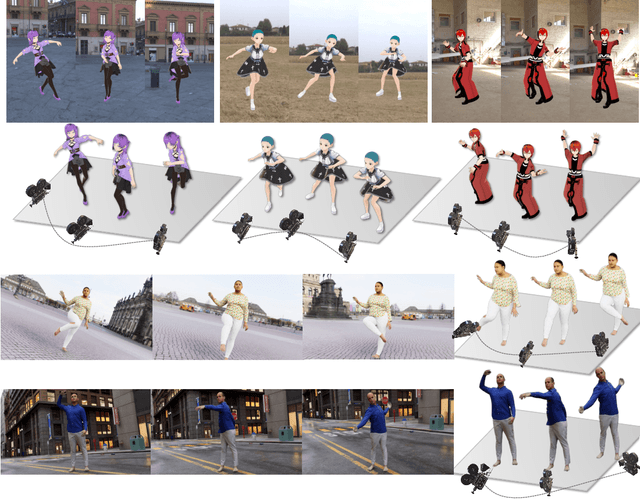

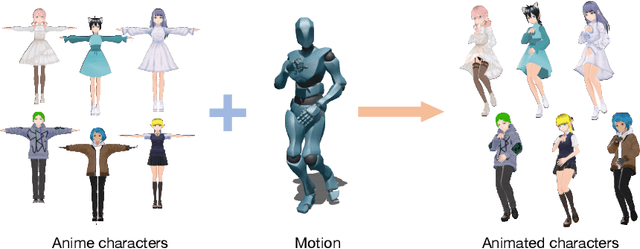
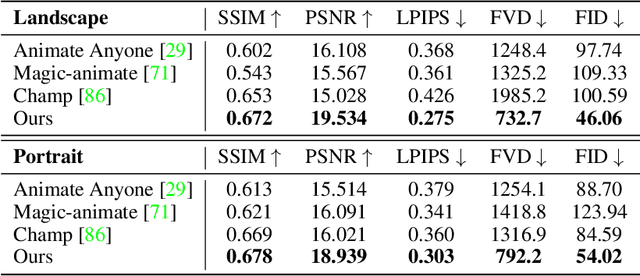
Abstract:Human image animation involves generating videos from a character photo, allowing user control and unlocking potential for video and movie production. While recent approaches yield impressive results using high-quality training data, the inaccessibility of these datasets hampers fair and transparent benchmarking. Moreover, these approaches prioritize 2D human motion and overlook the significance of camera motions in videos, leading to limited control and unstable video generation. To demystify the training data, we present HumanVid, the first large-scale high-quality dataset tailored for human image animation, which combines crafted real-world and synthetic data. For the real-world data, we compile a vast collection of copyright-free real-world videos from the internet. Through a carefully designed rule-based filtering strategy, we ensure the inclusion of high-quality videos, resulting in a collection of 20K human-centric videos in 1080P resolution. Human and camera motion annotation is accomplished using a 2D pose estimator and a SLAM-based method. For the synthetic data, we gather 2,300 copyright-free 3D avatar assets to augment existing available 3D assets. Notably, we introduce a rule-based camera trajectory generation method, enabling the synthetic pipeline to incorporate diverse and precise camera motion annotation, which can rarely be found in real-world data. To verify the effectiveness of HumanVid, we establish a baseline model named CamAnimate, short for Camera-controllable Human Animation, that considers both human and camera motions as conditions. Through extensive experimentation, we demonstrate that such simple baseline training on our HumanVid achieves state-of-the-art performance in controlling both human pose and camera motions, setting a new benchmark. Code and data will be publicly available at https://github.com/zhenzhiwang/HumanVid/.
Fast and Efficient: Mask Neural Fields for 3D Scene Segmentation
Jul 01, 2024Abstract:Understanding 3D scenes is a crucial challenge in computer vision research with applications spanning multiple domains. Recent advancements in distilling 2D vision-language foundation models into neural fields, like NeRF and 3DGS, enables open-vocabulary segmentation of 3D scenes from 2D multi-view images without the need for precise 3D annotations. While effective, however, the per-pixel distillation of high-dimensional CLIP features introduces ambiguity and necessitates complex regularization strategies, adding inefficiencies during training. This paper presents MaskField, which enables fast and efficient 3D open-vocabulary segmentation with neural fields under weak supervision. Unlike previous methods, MaskField distills masks rather than dense high-dimensional CLIP features. MaskFields employ neural fields as binary mask generators and supervise them with masks generated by SAM and classified by coarse CLIP features. MaskField overcomes the ambiguous object boundaries by naturally introducing SAM segmented object shapes without extra regularization during training. By circumventing the direct handling of high-dimensional CLIP features during training, MaskField is particularly compatible with explicit scene representations like 3DGS. Our extensive experiments show that MaskField not only surpasses prior state-of-the-art methods but also achieves remarkably fast convergence, outperforming previous methods with just 5 minutes of training. We hope that MaskField will inspire further exploration into how neural fields can be trained to comprehend 3D scenes from 2D models.
Technique Report of CVPR 2024 PBDL Challenges
Jun 15, 2024
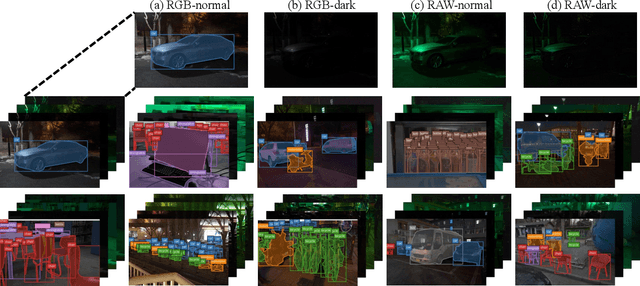
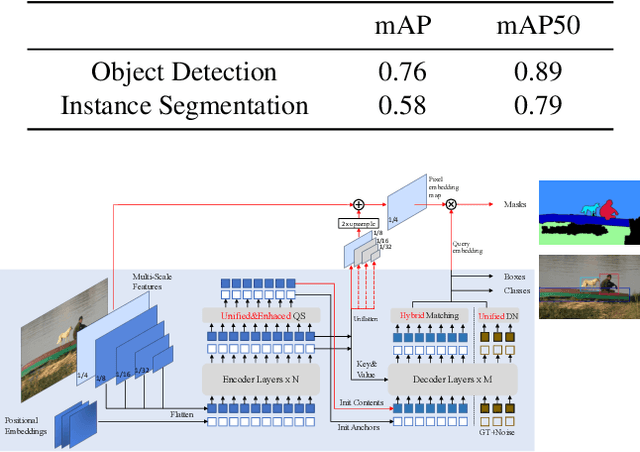

Abstract:The intersection of physics-based vision and deep learning presents an exciting frontier for advancing computer vision technologies. By leveraging the principles of physics to inform and enhance deep learning models, we can develop more robust and accurate vision systems. Physics-based vision aims to invert the processes to recover scene properties such as shape, reflectance, light distribution, and medium properties from images. In recent years, deep learning has shown promising improvements for various vision tasks, and when combined with physics-based vision, these approaches can enhance the robustness and accuracy of vision systems. This technical report summarizes the outcomes of the Physics-Based Vision Meets Deep Learning (PBDL) 2024 challenge, held in CVPR 2024 workshop. The challenge consisted of eight tracks, focusing on Low-Light Enhancement and Detection as well as High Dynamic Range (HDR) Imaging. This report details the objectives, methodologies, and results of each track, highlighting the top-performing solutions and their innovative approaches.
Multiplane Prior Guided Few-Shot Aerial Scene Rendering
Jun 07, 2024



Abstract:Neural Radiance Fields (NeRF) have been successfully applied in various aerial scenes, yet they face challenges with sparse views due to limited supervision. The acquisition of dense aerial views is often prohibitive, as unmanned aerial vehicles (UAVs) may encounter constraints in perspective range and energy constraints. In this work, we introduce Multiplane Prior guided NeRF (MPNeRF), a novel approach tailored for few-shot aerial scene rendering-marking a pioneering effort in this domain. Our key insight is that the intrinsic geometric regularities specific to aerial imagery could be leveraged to enhance NeRF in sparse aerial scenes. By investigating NeRF's and Multiplane Image (MPI)'s behavior, we propose to guide the training process of NeRF with a Multiplane Prior. The proposed Multiplane Prior draws upon MPI's benefits and incorporates advanced image comprehension through a SwinV2 Transformer, pre-trained via SimMIM. Our extensive experiments demonstrate that MPNeRF outperforms existing state-of-the-art methods applied in non-aerial contexts, by tripling the performance in SSIM and LPIPS even with three views available. We hope our work offers insights into the development of NeRF-based applications in aerial scenes with limited data.
* 17 pages, 8 figures, accepted at CVPR 2024
 Add to Chrome
Add to Chrome Add to Firefox
Add to Firefox Add to Edge
Add to Edge